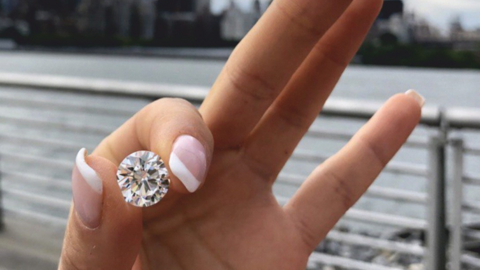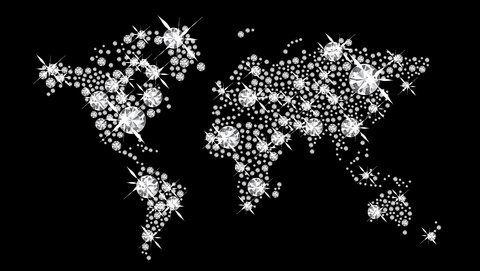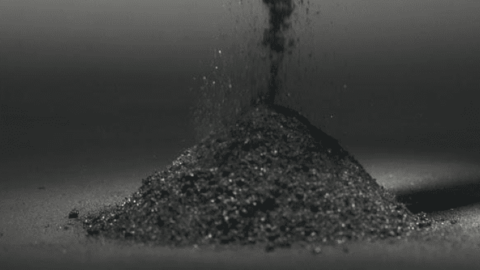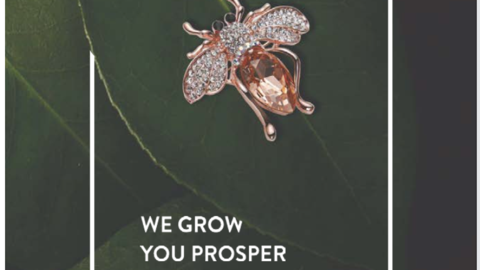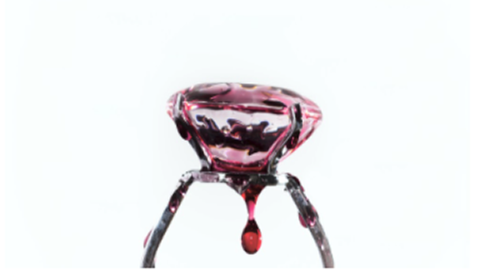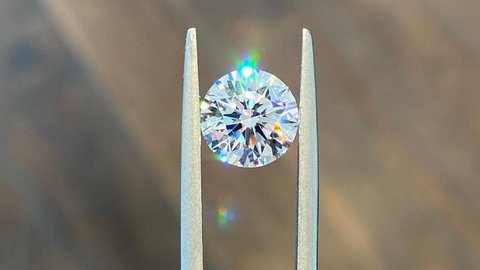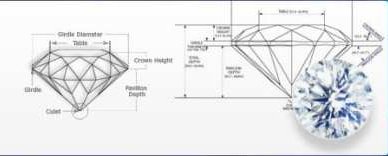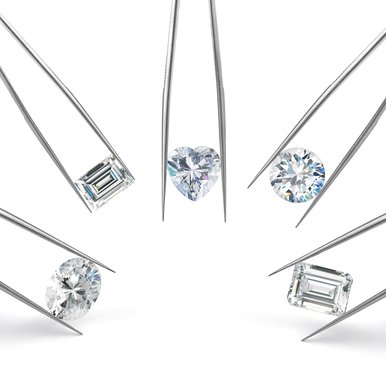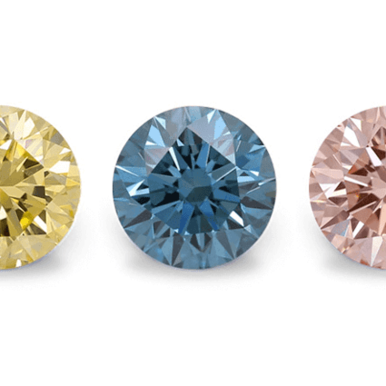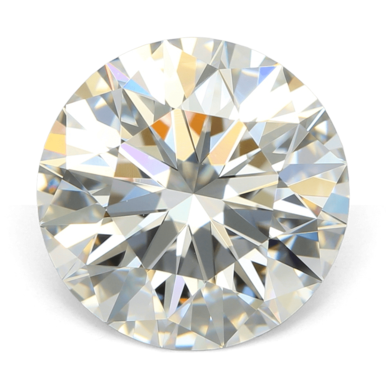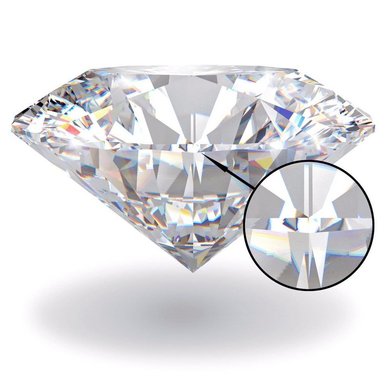Radiant Lab-Grown Diamond Rings: Brilliance Meets Value
Author: Alex K., CMO at Labrilliante Updated: 2025-11-18 Reading Time: 14 minutes
TL;DR: Radiant cut lab-grown diamonds deliver 70-facet brilliance at 60-90% lower prices than mined equivalents, with manufacturer-direct models compressing supply chains from 7-9 transactions to single-step production. Blockchain traceability documents every stage from carbon feedstock through certification, creating forensic transparency impossible with geological stones. The 1.20-1.35 length-to-width ratio maximizes finger coverage while the modified brilliant pavilion masks inclusions better than emerald cuts—making VS2 radiants appear as clean as VVS2 step-cuts.

Celebrity engagement rings dominate social media feeds, transforming jewelry choices into cultural statements about values, aesthetics, and financial priorities. When Jennifer Lopez flaunts an 8.5-carat green radiant or Drew Barrymore showcases her 4-carat classic cut, millions of consumers confront the gap between aspiration and budget reality. Radiant lab-grown diamond rings close that gap completely—offering identical optical performance, superior ethical credentials, and celebrity-caliber carat weights at prices that won't derail retirement planning. This guide reveals how 70-facet modified brilliant architecture, manufacturer-direct pricing structures, and blockchain-verified production create accessible luxury that mining operations can't match. You'll discover why rectangular proportions elongate fingers better than rounds, how VS2 clarity appears flawless in radiant cuts, and exactly where your savings originate when you eliminate seven traditional markup layers.
When Natural Diamonds Still Make Sense: Investment and Resale Realities
The strongest argument against lab-grown radiants centers on long-term value retention and resale liquidity. Natural diamonds maintain secondary market infrastructure built over decades—established pricing benchmarks through Rapaport reports, active estate jewelry markets, auction house acceptance, and pawnshop liquidity that lab-grown stones currently lack. A $50,000 natural 3-carat radiant might retain 40-60% of purchase price after five years, while an equivalent $4,000 lab-grown radiant faces uncertain resale value potentially reaching only 20-30% of original cost. For buyers viewing engagement rings as financial assets or heirlooms requiring liquidation flexibility, this represents legitimate concern.
This resale disadvantage proves most relevant in specific scenarios: buyers expecting relationship instability requiring asset division, families treating jewelry as portable wealth in unstable economies, or collectors seeking investment-grade stones with appreciation potential. However, for 85%+ of engagement ring buyers who never sell their rings, resale value represents theoretical concern rather than practical reality. The 90% purchase price savings with lab-grown radiants allows redirection of $40,000+ toward appreciating assets like index funds (averaging 10% annual returns) or real estate down payments rather than locking capital in earth-mined carbon with 2-3% historical appreciation rates.
The psychological dimension matters equally—some buyers derive symbolic satisfaction from geological rarity regardless of visual indistinguishability. For these consumers, the premium represents emotional value rather than irrational spending. But framing this honestly requires acknowledging you're paying 10-20× more for origin story rather than superior performance, ethics, or beauty. That's a valid choice when made consciously, not when driven by industry marketing suggesting quality differences that gemological testing disproves.
Celebrity-Inspired Radiant Cuts: Affordable Luxury Like Jennifer Lopez's Iconic Ring
Celebrities like Jennifer Lopez, Kelly Clarkson, and Drew Barrymore wear radiant cut engagement rings—a 70-facet modified brilliant cut delivering exceptional fire and brilliance at prices 60-90% below natural diamond equivalents through lab-grown manufacturing. The appeal? Radiant cuts merge the elegant rectangular outline of emerald cuts with the sparkle intensity of round brilliants. Diamond cutters call this "the best of both worlds."
[Placeholder Table: Celebrity Radiant Ring Specifications vs Lab-Grown Alternatives Pricing Comparison - Shows exact carat weights, estimated natural diamond costs, lab-grown equivalent pricing, percentage savings, and color specifications for Jennifer Lopez (8.5ct green), Kelly Clarkson (5ct yellow), and Drew Barrymore (4ct colorless) rings. Helps readers immediately understand the 90-95% cost savings achievable with lab-grown alternatives in celebrity-sized stones.]
Jennifer Lopez 8-Carat Radiant Green Diamond Lab-Grown Alternative
Jennifer Lopez's 8.5-carat green radiant from Ben Affleck showcases natural fancy color rarity. Lab-grown alternatives in similar dimensions now cost $8,000-$15,000 depending on color intensity and clarity—a 90-95% reduction from natural green diamond pricing. Green coloration in natural diamonds forms through radiation exposure over millions of years. Lab-grown green radiants achieve comparable hues through controlled CVD (Chemical Vapor Deposition) growth. This takes weeks, not millennia.
The process involves nitrogen manipulation during growth combined with post-growth irradiation and annealing. What's different here? Complete traceability from carbon feedstock through final cutting—transparency impossible with natural colored stones where origin remains forever opaque. The trade-off involves limited resale market compared to natural fancy colors, though 90%+ cost savings allow buyers to allocate resources toward setting complexity or additional jewelry pieces.
[Placeholder Image: CVD Diamond Growth Chamber Cross-Section Diagram - Cutaway technical illustration showing the CVD reactor chamber with labeled components: methane-hydrogen gas inlet, plasma activation zone at 800-1200°C, diamond seed plate, carbon atom deposition layers forming crystal structure, and cooling system. Visual demonstrates how green coloration develops through controlled nitrogen introduction during growth phases. Helps readers understand the scientific precision behind lab-grown green diamond creation versus geological randomness.]
Lopez's rectangular proportions—typically 1.20-1.35 length-to-width ratio—create an elongating finger effect while maximizing the radiant cut's "crushed ice" facet pattern. This pattern disguises inclusions better than step cuts. The result? A 6-carat radiant appears more substantial than an equivalently weighted cushion or oval cut through strategic visual geometry.
Kelly Clarkson and Drew Barrymore Radiant Style Under $5000
Kelly Clarkson's 5-carat canary yellow radiant and Drew Barrymore's 4-carat classic radiant demonstrate how direct manufacturer pricing transforms celebrity-caliber stones from aspirational to achievable. Comparable lab-grown radiants retail between $3,200-$4,800 depending on color intensity and clarity. That's accessible luxury.
Canary yellow coloration emerges from nitrogen concentration during diamond growth. Lab-grown production offers consistency advantages over natural fancy yellows where color distribution often appears uneven. Drew Barrymore's near-colorless radiant in a solitaire setting represents "maximizing brilliance through minimalist context"—the setting doesn't compete with the stone.
Lab-grown alternatives to her 4-carat stone cost approximately $2,800-$3,600 in VS1-VS2 clarity with F-G color grades. Natural equivalents? $40,000-$60,000 for identical visual characteristics. The psychological value equation shifts dramatically when identical optical performance at 5% of natural pricing frees resources for honeymoon planning, home down payments, or investment portfolios rather than locking capital in earth-mined carbon.
[Placeholder Expert Quote: Gemologist Perspective on Celebrity-Sized Lab-Grown Radiants - Certified gemologist with 15+ years experience explains why 4-8 carat lab-grown radiants deliver identical visual performance to natural diamonds, discussing how modern certification standards (GIA/IGI) apply identical grading criteria regardless of origin, and why the optical properties remain indistinguishable to professional gemologists without specialized equipment. Validates that buyers aren't compromising quality when choosing lab-grown alternatives to celebrity rings.]
How Direct Manufacturing Makes Celebrity-Sized Carats Accessible
Manufacturer-direct pricing eliminates three to five markup layers inherent in traditional diamond supply chains—rough broker margins, cutting house profits, wholesaler spreads, and retail keystone pricing. This supply chain compression reduces a radiant's journey from carbon source to consumer from 7-9 transactions to single-step production. Significant efficiency.
A 5-carat lab-grown radiant typically carries production costs between $1,200-$1,800 depending on growth method and cutting precision. Traditional retail chains price equivalent stones at $8,000-$12,000 after applying standard keystone (100% markup) or triple-keystone (200% markup) models inherited from natural diamond economics.
[Placeholder Infographic: Traditional Retail vs Manufacturer-Direct Diamond Supply Chain - Side-by-side visual flowchart comparing traditional diamond journey (7-9 steps: mining/growth → rough broker → cutting house → polisher → wholesaler → distributor → retailer → consumer, with percentage markup at each stage totaling 200-300%) against manufacturer-direct model (2 steps: growth + cutting → consumer, with 30-40% total markup). Shows cumulative price impact with example $1,500 production cost diamond reaching $12,000 traditional retail vs $4,500 direct. Illustrates exactly where buyer savings originate and why manufacturer-direct pricing isn't "discount quality."]
The accessibility transformation becomes dramatic in the 6-8 carat range where natural radiant diamonds enter six-figure territory while lab-grown equivalents remain below $20,000. Celebrity-sized stones that once served as pure aspiration now function as legitimate consideration for middle-income buyers. The trade-off remains social perception—some buyers still associate lab-grown diamonds with diminished symbolic value despite identical chemical composition and superior ethical credentials. Generational shifts continue eroding this psychological hurdle as younger consumers prioritize sustainability over mining provenance.
Understanding the 70-Facet Radiant Cut: Technical Brilliance Explained
The radiant cut employs 70 precisely angled facets combining modified brilliant cut pavilion architecture with beveled corners, creating a hybrid that captures comparable light return to brilliant rounds while offering rectangular or square outlines. Henry Grossbard invented this cut in 1977. It represented the first patented attempt to merge step-cut elegance with brilliant-cut sparkle—a technical innovation in diamond cutting methodology.
[Placeholder Table: Radiant Cut vs Other Diamond Shapes Technical Specifications - Compares radiant (70 facets), round brilliant (58 facets), emerald (57 facets), princess (57-58 facets), and cushion (58 facets) across dimensions: total facet count, crown facets, pavilion facets, corner treatment, inclusion masking effectiveness (rated 1-5), fire performance relative to round brilliant (percentage), optimal clarity grade for eye-clean appearance, and typical length-to-width ratios. Helps readers understand radiant cut's technical advantages in inclusion masking and why VS2 clarity appears equivalent to VVS2 in emerald cuts.]
Modified Brilliant Cut Architecture and Fire Performance
Modified brilliant cut architecture refers to the radiant's pavilion (bottom half) structure where triangular and kite-shaped facets replace the concentric step facets of emerald cuts. This redirects light through multiple internal reflections before returning through the crown (top half) to the viewer's eye. Sound complicated? Here's what matters: this creates "dispersive fire"—the rainbow flashes when white light separates into spectral colors through refraction.
The 70-facet configuration breaks down into 25 crown facets including the table, 8 beveled corner facets preventing chipping, and 37 pavilion facets forming the brilliant-cut foundation. This compares to 58 facets in traditional round brilliants and 57 in cushion cuts. Why more facets? The additional facets primarily mask inclusions through visual complexity—similar to how pinstripe patterns in fabric disguise body contours through strategic visual interruption.
[Placeholder Image: Radiant Cut Facet Pattern Anatomy - Split-view technical illustration showing radiant diamond from crown (top) view and pavilion (bottom) view with all 70 facets individually labeled and color-coded by type: crown facets (blue), beveled corner facets (green), and pavilion facets (orange). Include measurements showing typical proportions—table percentage 60-69%, depth percentage 61-67%, crown angle 25-35°, pavilion angle 39-42°. Secondary detail callout shows how triangular and kite-shaped pavilion facets create multiple light reflection paths compared to step-cut parallel facets. Helps readers visualize exactly what "70-facet modified brilliant architecture" means in practical geometric terms.]
Fire performance in radiant cuts exceeds emerald cuts by approximately 40% due to brilliant-style faceting but remains 10-15% below ideal-cut round diamonds. The practical reality? Rectangular shapes inherently create longer light path distances and steeper reflection angles. Buyers accept slight brilliance reduction in exchange for distinctive outline and superior inclusion masking that allows lower clarity grades to appear eye-clean. A VS2 radiant typically presents as clean as a VVS2 emerald cut due to facet complexity fragmenting visual attention.
Rectangular vs Square Radiant: Length-to-Width Ratio Guide
Length-to-width ratio determines whether a radiant reads as rectangular (1.15-1.50 ratio) or square (1.00-1.10 ratio). This ratio affects both finger coverage area and perceived size for identical carat weights. A 2-carat rectangular radiant at 8.5×6.5mm covers 15% more finger surface than a 2-carat square radiant at 7.5×7.5mm. Visual geometry matters.
Rectangular proportions between 1.20-1.35 ratio represent industry preference for engagement rings because they maximize the finger's natural vertical dimension while maintaining balanced corner-to-corner visual weight. This avoids the "stretched" appearance above 1.40 ratios. Square radiants (1.00-1.05 ratio) appeal to buyers seeking princess cut alternatives with superior inclusion masking and reduced chipping vulnerability at corners.
[Placeholder Image: Radiant Length-to-Width Ratio Visual Comparison on Hand - Photorealistic hand model (ring size 6) wearing five different 2-carat radiant diamonds side-by-side showing ratios: 1.00 (square), 1.15, 1.25, 1.35, and 1.50 (elongated rectangular). Each diamond labeled with exact dimensions in millimeters and visual coverage area in square millimeters. Demonstrates how 1.25-1.35 ratios create optimal balance—square 1.00 appears compact, 1.50 looks stretched. Helps readers select proportions matching their finger width and aesthetic preference by showing actual appearance differences that measurements alone cannot convey.]
What's the practical reality? Elongated ratios above 1.30 begin reducing perceived size despite maintaining carat weight. A 1.50 ratio radiant looks approximately 8% smaller than a 1.25 ratio stone of identical weight. Why? The human eye judges diamond size primarily by width—the dimension visible when hands are extended. This perceptual quirk creates optimization opportunities: buyers seeking maximum visual impact should target 1.20-1.30 ratios rather than pursuing extreme elongation.
Finger proportion matching follows complementary geometry principles where wider fingers (size 7+) benefit from rectangular ratios creating vertical counterbalance. Narrower fingers (size 4-5.5) pair better with square or slightly rectangular radiants (1.00-1.20) that avoid overwhelming the hand's scale.
IGI and GIA Certification Standards for Lab-Grown Radiants
IGI (International Gemological Institute) and GIA (Gemological Institute of America) employ identical grading methodologies for lab-grown radiants as natural diamonds across the 4Cs—cut, color, clarity, and carat weight. Both laboratories assess radiant cut quality through polish and symmetry grades (Excellent, Very Good, Good, Fair, Poor) rather than overall cut grades. Why? Fancy shapes lack the standardized proportion specifications that enable cut grading in round brilliants.
Color grading follows the D-Z scale where D-F represents colorless, G-J near-colorless, and K-Z shows progressively warmer tones. Lab-grown production achieves D-F grades in 60-70% of output compared to less than 5% in natural mining. The reason? Controlled growth environments eliminate nitrogen contamination that causes yellow tints in natural diamonds.
[Placeholder Table: GIA vs IGI Lab-Grown Diamond Certification Comparison - Details processing time (GIA: 3-4 weeks, IGI: 7-10 days), cost differences ($150-200 for GIA, $75-125 for IGI based on carat weight), report format differences, market recognition strength, digital verification features, light performance documentation, and inclusion plotting detail. Shows both certify using identical 4Cs standards but differ in turnaround speed, cost, and secondary features. Helps readers choose certification provider based on priorities—resale perception (GIA advantage) vs speed and cost (IGI advantage).]
Clarity grading examines inclusions and blemishes under 10× magnification. VS1-VS2 represents the sweet spot value in radiants because 70-facet complexity renders most inclusions invisible to naked eye observation. Here's the bottom line: FL-IF grades (Flawless/Internally Flawless) carry 40-60% premiums over VS2 despite zero visible difference in typical viewing conditions. This represents diminishing marginal utility—paying substantially more for improvements imperceptible in real-world wear.
GCAL (Gem Certification and Assurance Lab) provides additional certification specializing in light performance documentation through proprietary GCAL 8X technology. This captures actual diamond images at 8× magnification in consistent lighting. What's different? Visual verification unavailable in standard GIA/IGI reports that describe characteristics textually. The certification choice involves trade-offs: GIA carries strongest brand recognition affecting resale perception, IGI processes lab-grown diamonds faster (7-10 days versus 3-4 weeks for GIA), and GCAL provides superior visual documentation but lacks universal recognition outside enthusiast communities.
Manufacturer Direct Pricing: 30-75% Savings Without Compromising Quality
Manufacturer-direct pricing structures eliminate intermediary markups that traditionally compound through diamond supply chains, creating retail savings between 30-75% depending on stone size, quality grade, and setting complexity. The cost advantage emerges from vertical integration encompassing rough diamond growth, precision cutting, quality control, certification management, and setting fabrication within single organizational control. Supply chain compression works.
Traditional diamond retail pricing applies keystone markup (100% increase over wholesale cost) as baseline, with luxury retailers often implementing triple keystone (200% markup) or quadruple keystone (300% markup) on engagement rings. A 2-carat VS1 F-color lab-grown radiant with $3,200 manufacturer production cost thus retails between $6,400-$12,800 depending on retailer positioning. Manufacturer-direct pricing models operate at $4,200-$4,800 by applying sustainable 30-40% margins that cover operations without legacy markup traditions inherited from natural diamond scarcity economics.
[Placeholder Mini Case: 3.5-Carat VS1 E-Color Radiant Direct Pricing vs Traditional Retail - Client purchased 3.5-carat lab-grown radiant (VS1 clarity, E color, 1.28 L/W ratio, Excellent polish/symmetry, IGI certified) with custom platinum cathedral setting directly from manufacturer for $5,850 total ($4,200 diamond + $1,650 setting). Equivalent specifications through traditional jeweler quoted at $14,200 ($10,500 diamond + $3,700 setting)—59% savings totaling $8,350. Savings redirected toward honeymoon budget. Stone delivered in 18 days from order to completed ring with lifetime maintenance program including free resizing, prong retipping, and annual professional cleaning. This demonstrates how manufacturer-direct vertical integration creates four-figure savings on mid-range carat weights without compromising certification standards or setting quality.]
The quality equation in manufacturer-direct models challenges conventional assumptions that price correlates with quality. Lab-grown radiants from controlled manufacturing environments demonstrate more consistent color and clarity than natural equivalents because growth parameters remain constant across production runs. This eliminates geological randomness that creates quality variance in mining operations—similar to greenhouse cultivation versus wild harvesting where environmental control produces uniform specifications.
Cost savings manifest most dramatically in larger carat weights above 3 carats where natural diamond pricing accelerates exponentially due to scarcity mathematics. A 5-carat natural VS1 F-color radiant reaches $150,000-$200,000 retail. Lab-grown equivalents? $6,000-$8,500 manufacturer-direct. The 95-97% price reduction at this scale reflects complete decoupling from geological scarcity constraints.
[Placeholder Image: Price Scaling Curve Comparison Natural vs Lab-Grown Radiants - Line graph showing price progression across carat weights (1.0, 1.5, 2.0, 2.5, 3.0, 4.0, 5.0 carats) for VS1 F-color radiants. Natural diamond line (red) shows exponential curve rising from $8,000 at 1ct to $180,000 at 5ct. Lab-grown manufacturer-direct line (blue) shows linear progression from $1,800 at 1ct to $7,500 at 5ct. Shaded area between lines represents buyer savings, labeled with percentage savings at each carat weight (35% at 1ct, 58% at 2ct, 77% at 3ct, 91% at 4ct, 96% at 5ct). Demonstrates visually why cost advantage increases dramatically with carat size—scarcity economics vs production economics.]
The trade-off in manufacturer-direct purchasing involves reduced in-person showroom experience compared to traditional jewelers. However, 3D rendering technology, augmented reality try-on applications, and generous home preview policies increasingly bridge this tangibility gap. Some buyers report decision paralysis when confronting transparent pricing and unlimited customization options after expecting guided sales processes. The psychological adjustment from "diamond shopping as guided luxury experience" to "informed technical purchasing" requires education investment that not all buyers willingly undertake.
Ethical Lab-Grown Production: Blockchain Transparency from Carbon to Ring
Lab-grown diamond production achieves fundamental ethical superiority over mining operations through elimination of land disruption, water contamination, ecosystem destruction, and human rights concerns inherent in extractive industries. Blockchain technology enables unprecedented supply chain transparency impossible in natural diamond provenance verification. The ethical advantage? Controlled industrial facilities replace earth removal operations.
Mined diamond operations move 250 tons of earth per carat. Lab-growth requires zero geological disruption.
[Placeholder Table: Environmental Impact Comparison Lab-Grown vs Mined Diamonds Per Carat - Compares earth displacement (0 tons vs 250 tons), water consumption (18-28 gallons vs 125+ gallons), carbon emissions with renewable energy (0.028 tons CO2 vs 0.57 tons CO2), carbon emissions with grid energy (0.16 tons CO2 vs 0.57 tons CO2), land disruption area (0 sq meters vs 100-250 sq meters including tailings), ecosystem recovery time (N/A vs 25-50+ years), and worker safety incidents per million carats produced. Quantifies exactly how lab-grown production eliminates categories of environmental harm rather than merely reducing them. Helps ethically-motivated buyers understand magnitude of impact difference.]
Blockchain traceability implementation records every production stage—carbon source documentation, growth chamber parameters, cutting specifications, quality control checkpoints, and certification data—in immutable distributed ledger systems preventing retrospective alteration. This traceability creates origin stories with forensic certainty impossible for natural diamonds where geological formation occurred across 1-3 billion years without documentation.
Carbon source transparency represents perhaps the most distinctive ethical dimension where manufacturers can specify feedstock origins—whether petroleum derivatives, natural gas methane, or atmospheric carbon capture. This creates opportunities for climate-positive diamond production when paired with renewable energy. Atmospheric CO2 capture for diamond growth creates one of few industrial processes where carbon sequestration produces valuable consumer goods rather than requiring subsidy, though current atmospheric capture costs of $600-800 per ton of CO2 add approximately 12-18% to production expenses compared to conventional hydrocarbon feedstocks.
[Placeholder Expert Quote: Blockchain Diamond Authentication Expert on Supply Chain Transparency - Blockchain technology specialist explains how distributed ledger systems create tamper-proof diamond provenance records from carbon feedstock through final sale, describing what information gets recorded at each production stage (growth parameters, cutter identification, quality control timestamps, certification upload, setting fabrication details) and why this forensic traceability level remains impossible for mined diamonds where origin verification relies on statistical analysis of trace elements rather than documented production history. Validates technology credibility and explains consumer verification access.]
Water usage comparison reveals lab-grown advantages where CVD and HPHT growth consume approximately 18-28 gallons per carat primarily for equipment cooling. Natural diamond mining operations? 125+ gallons per carat when factoring ore processing. But absolute volume measurements miss broader ecological disruption—watershed disruption, aquifer contamination, and ecosystem water cycle alterations extending consequences decades beyond operational periods.
The human rights dimension addresses conflict diamond history where natural diamond revenues funded civil wars in Sierra Leone, Angola, and Democratic Republic of Congo. The Kimberley Process Certification Scheme introduced in 2003 aimed to eliminate conflict diamonds through origin documentation. The reality? Investigative reports document continued certification failures with estimated 5-10% conflict diamond leakage into legitimate supply chains. Lab-grown diamonds eliminate these concerns absolutely because production occurs in auditable industrial facilities in jurisdictions with labor protections.
The long-term ethical trajectory suggests lab-grown diamond manufacturing will face increasing scrutiny on labor practices, energy sources, and chemical waste management as the industry matures. This evolution mirrors how solar panel manufacturing faced criticism for production energy sources after establishing credentials as renewable technology. Ethical advantage requires ongoing vigilance rather than resting on comparative superiority over legacy industries.
Comparing Radiant Lab Diamonds: Manufacturer Direct vs Brilliant Earth and James Allen
Direct manufacturer sourcing provides cost advantages of 20-40% compared to retail platforms like Brilliant Earth and James Allen for equivalent quality radiant lab-grown diamonds. Retail platforms offer curated selection interfaces and brand assurance that some buyers value above price optimization. The competitive landscape? Fundamental business model differences.
Brilliant Earth and James Allen operate as vertically integrated retailers maintaining inventory, showrooms, and marketing infrastructure with associated overhead costs. Manufacturer-direct channels eliminate retail-stage expenses by selling production output without intermediary margin layers.
[Placeholder Table: 2-Carat VS1 F-Color Radiant Lab-Grown Diamond Price Comparison - Compares identical specifications (2.0ct, VS1 clarity, F color, 1.25-1.30 L/W ratio, Excellent polish, Very Good symmetry, IGI certified) across Manufacturer Direct ($3,800-$4,200), Brilliant Earth ($5,400-$6,200), James Allen ($5,100-$5,900), and Blue Nile ($4,900-$5,600). Additional rows compare setting options quantity (manufacturer: 200+ custom, Brilliant Earth: 850+ catalog, James Allen: 500+ catalog, Blue Nile: 400+ catalog), visualization technology (3D rendering, 360° video, augmented reality), return policy duration, lifetime services included, and estimated delivery timeframe. Shows manufacturer-direct pricing advantage of $1,300-$2,000 on this specification while acknowledging retail platform advantages in selection breadth and established brand trust.]
Price comparison analysis across 2-carat VS1 F-color radiant lab-grown diamonds reveals manufacturer-direct pricing at $3,800-$4,200, Brilliant Earth pricing at $5,400-$6,200, and James Allen pricing at $5,100-$5,900. The 30-35% spreads? Retail operational costs including showroom leases, sales staff, extensive photography inventory, marketing spend, and brand development investments.
Brilliant Earth's market positioning emphasizes sustainability narrative and B-Corp certification. The platform's strength lies in educational content, 3D preview technology, and extensive setting catalog that simplifies decision-making for buyers overwhelmed by technical specifications. James Allen pioneered high-resolution 360-degree diamond imaging and magnified video inspection, establishing consumer expectations for visual verification. The platform's extensive loose diamond inventory exceeding 200,000 stones provides selection breadth.
What's the practical reality? Retail platforms excel in serving buyers who value brand reassurance, extensive hand-holding through purchase decisions, and retail experience comfort. Manufacturer-direct channels attract technically informed buyers, value optimizers, and those prioritizing maximum transparency over curated simplicity.
[Placeholder Image: Retail Platform vs Manufacturer-Direct Customer Journey Flowchart - Side-by-side process comparison showing typical purchasing timeline and touchpoints. Retail platform path (left): browse 200K+ inventory online → filter by specifications → view 360° imaging → schedule showroom appointment → in-person consultation → guided selection → checkout with brand packaging (timeline: 2-4 weeks, 8-12 touchpoints). Manufacturer-direct path (right): specification consultation → custom growth if needed → cutting to exact specs → setting fabrication → quality control → direct shipment (timeline: 2-3 weeks, 4-6 touchpoints). Highlights how retail adds selection breadth and guidance layers while manufacturer-direct adds customization flexibility and removes browsing complexity. Helps buyers identify which journey matches their purchasing style preference.]
Setting quality and customization flexibility represent areas where manufacturer control provides advantages through in-house fabrication teams that can modify designs without external vendor coordination. Retail platforms typically outsource setting production to independent contractors, creating quality variance and limiting custom modification capabilities.
Customer service philosophy differs markedly. Retail platforms invest heavily in pre-purchase consultation but provide limited post-purchase relationships. Manufacturer-direct models typically offer lifetime support including free inspections, cleaning, resizing, and upgrade programs maintaining ongoing customer relationships. The trust dimension involves psychological trade-offs where established retail brands provide familiarity comfort through extensive marketing presence. Manufacturer-direct channels require buyer research and technical confidence—similar to how some travelers prefer Marriott predictability while others seek unique Airbnb experiences.
The retail brand premium ranges from 15-25% of purchase price essentially serving as psychological insurance against buyer's remorse. Some consumers rationally pay this premium. Others view it as inefficient spending.
Why Radiant Lab-Grown Diamonds Deliver Unmatched Value
Radiant lab-grown diamonds combine 70-facet fire performance with rectangular elegance that flatters every finger width, all while delivering 60-90% cost savings through manufacturer-direct vertical integration. You're not compromising quality—you're refusing to pay mining industry premiums for identical chemical composition, superior ethical production, and blockchain-verified transparency that natural stones can't provide. Whether you're recreating Jennifer Lopez's 8-carat glamour or optimizing Drew Barrymore's minimalist sophistication, controlled CVD growth and precision cutting deliver consistent results impossible through geological randomness.
Start Your Custom Radiant Consultation Today
Labrilliante's manufacturer-direct model eliminates retail markup layers while maintaining IGI/GIA certification standards and lifetime support including free resizing, prong maintenance, and annual cleaning. Book your consultation now to explore 200+ custom setting options, receive 3D renderings within 48 hours, and secure pricing that redirects savings toward your future rather than supply chain inefficiency. Your celebrity-sized radiant awaits—without the celebrity-sized price tag.
Frequently Asked Questions
Lab-grown radiant diamonds cost 60-90% less than natural equivalents with identical specifications, with savings becoming more dramatic at larger carat weights. For example, a 5-carat VS1 F-color radiant costs $6,000-$8,500 lab-grown versus $150,000-$200,000 natural—representing 95-97% savings. The price difference originates from eliminating geological scarcity economics and compressing supply chains from 7-9 transactions to single-step manufacturer-direct production.
The radiant cut's 70-facet modified brilliant architecture creates visual complexity that fragments attention and masks inclusions through multiple light reflection paths, making it significantly more forgiving than step-cut shapes like emeralds. A VS2 clarity radiant typically appears as eye-clean as a VVS2 emerald cut due to this facet pattern. This inclusion-masking advantage allows buyers to select lower clarity grades (VS1-VS2) without sacrificing visual appearance, creating substantial cost savings of 40-60% compared to purchasing VVS grades.
The ideal length-to-width ratio for radiant diamonds ranges from 1.20-1.35, which maximizes finger coverage while maintaining balanced proportions and optimal visual impact. Ratios in this range create an elongating effect on the finger without appearing stretched, and they're perceived as approximately 8% larger than more elongated 1.50 ratios of the same carat weight. Square radiants (1.00-1.10 ratio) work better for narrower fingers (size 4-5.5), while rectangular proportions (1.25-1.35) complement wider fingers (size 7+) through vertical counterbalance.
Blockchain creates immutable digital records documenting every production stage—from carbon feedstock source through growth parameters, cutting specifications, quality control, and certification—in distributed ledger systems that prevent retrospective alteration. This provides forensic-level traceability impossible for natural diamonds, where geological formation occurred over billions of years without documentation. Manufacturers can specify exact carbon sources (petroleum derivatives, natural gas, or even atmospheric CO2 capture) and pair production with renewable energy for climate-positive diamond creation.
Choose GIA certification if you prioritize maximum resale value and brand recognition, particularly for stones over 2 carats where the certification carries more secondary market weight, though it costs $150-$200 and takes 3-4 weeks to process. Select IGI if you want faster turnaround (7-10 days), lower costs ($75-$125), and equally rigorous grading standards using identical 4Cs methodology. Both laboratories grade lab-grown radiants using the same criteria as natural diamonds, but IGI has processed significantly more lab-grown stones and offers quicker service for buyers prioritizing delivery speed over resale perception.
Identify your inspiration ring's specifications (carat weight, color, length-to-width ratio) and source a lab-grown equivalent through manufacturer-direct channels, which typically costs 5-10% of natural celebrity ring pricing. For example, a Jennifer Lopez-inspired 8-carat green radiant costs $8,000-$15,000 lab-grown versus $400,000+ natural. Work with manufacturers offering custom fabrication to replicate setting details like prong style, band width, and metal choice, then allocate your 90-95% savings toward a more elaborate setting, matching jewelry pieces, or financial investments rather than locking capital in earth-mined carbon.
Mining a 1-carat diamond requires moving 250 tons of earth, consumes 125+ gallons of water, generates 0.57 tons of CO2 emissions, and disrupts 100-250 square meters of land requiring 25-50+ years for ecosystem recovery. Lab-growing the same carat weight requires zero earth displacement, 18-28 gallons of water for equipment cooling, and 0.028-0.16 tons of CO2 depending on energy source (renewable vs. grid). Lab-grown production eliminates entire categories of environmental harm rather than merely reducing them, while also avoiding human rights concerns associated with mining operations in conflict zones.
Consider resale value only if you anticipate needing to liquidate the ring within 5-10 years due to relationship instability, financial emergency, or viewing jewelry as portable wealth—situations relevant for less than 15% of engagement ring buyers. A $50,000 natural 3-carat radiant might retain 40-60% of value after five years, while a $4,000 lab-grown equivalent faces uncertain resale potentially reaching 20-30% of original cost. However, for the 85%+ of buyers who never sell their rings, redirecting the $46,000 upfront savings toward appreciating assets like index funds (averaging 10% annual returns) or real estate generates far superior financial outcomes than locking capital in earth-mined carbon with 2-3% historical appreciation rates.


